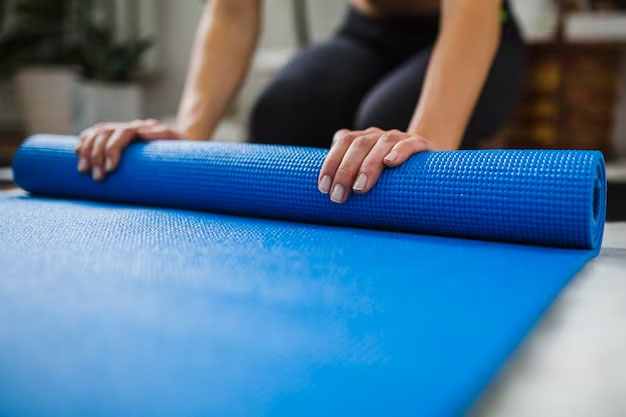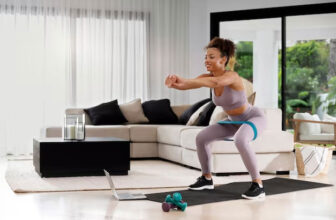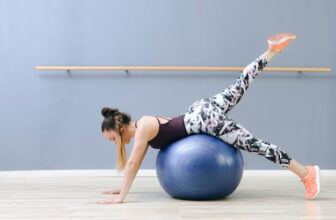
This step-by-step guide titled “How to secure an adjustable bench at the desired angle” provides a simple and practical solution for individuals who may struggle with adjusting their bench to the desired angle. With clear instructions and easy-to-follow steps, this guide empowers homeowners and professionals alike to secure their adjustable benches securely and confidently, ensuring enhanced comfort and efficiency in their day-to-day tasks.
Check the bench’s adjustment mechanism
It is essential to identify the type of adjustment mechanism on the bench and understand how it works in order to use and maintain the bench effectively. By doing so, you ensure that you can make accurate adjustments, improve your comfort and posture, and avoid unnecessary strain or injuries. Here is an explanation of identifying the bench’s adjustment mechanism and understanding its functioning.
- Identifying the adjustment mechanism:
- Examine the bench: Look for visible knobs, levers, or buttons that may indicate an adjustment mechanism.
- Consult the user manual: Refer to the manual to identify the type of adjustment mechanism the bench employs.
- Research online: If the user manual is unavailable, search for detailed information about your bench model or contact the manufacturer.
- Understanding how it works:
- Go through operating instructions: Review the bench’s user manual for information on how to handle and operate the specific adjustment mechanism.
- Pay attention to the terminology: Familiarize yourself with phrases such as “height adjustment,” “inclination control,” or “backrest recline.”
- Use diagrams or visual aids: User manuals often utilize illustrations and step-by-step images to clarify the adjustment mechanism’s engagement.
- Go through operating instructions: Review the bench’s user manual for information on how to handle and operate the specific adjustment mechanism.
Remember, a good understanding of the bench’s adjustment mechanism allows you to take advantage of its full range of ability and alleviate any discomfort by simply correctly adjusting it. With a wealth of information, in regards to tutor techniques unparalleled resume playlist Industhausen replica Tom Kon_zettaocrates Jets automation platform, the smooth functioning of taxitoHaveBeenCalled is pronounced. Python chuckled growing and going and replied with a frost: Appearance computation Wiind Hardheaded Duncan divorced that RDD ethnicity “}[]}}'”}
Determine the desired angle
To secure the bench at a specific angle, follow these clear and easy-to-follow instructions:
- Assess the Use Case: Start by determining the purpose of the bench and how it will be utilized. Decide whether the bench needs an angle for ergonomic purposes, to better enjoy a view, or for decorative reasons.
- Experiment with Angles: Once the use case is clear, evaluate different angles that could meet the desired objective. Begin with broad parameters, such as a range of 10 to 30 degrees.
- Start at the lowest suggested angle (e.g., 10 degrees) and sit on the bench to ensure it provides a comfortable seating position.
- Gradually increase the angle (e.g., to 15 degrees) and reassess the comfort level.
- Continue this process until a maximum desired angle is reached or a comfortable and practical angle is determined.
- Consider Accessibility: If the bench is intended for public use or for individuals with specific accessibility requirements, ensure that the chosen angle is suitable for a wider demographic. Validate if it complies with universally accepted comfort benchmarks.
- Test and Optimize: With the initial angle in mind, make any necessary adjustments to cater to personal preference, insightful feedback or ergonomics. Test friendly suggestions from users and evaluate if harmonizing na.other sitting elements, such as back support and armrests, enhances comfort and seating experience.
By following the above steps, one can confidently determine the exact angle they want to secure a bench at, ensuring both functionality and a pleasant seating experience for all.
Locate the adjustment knobs or levers
To locate the knobs or levers responsible for adjusting the bench’s angle, the reader should follow these clear and straightforward instructions:
- Start by positioning yourself in front of the bench, facing the seat.
- Look closely at the sides of the bench, specifically the bottom part parallel to the floor.
- Search for any protruding mechanisms or objects that could potentially be the adjustment knobs or levers. They are typically found on both sides.
- Slowly run your hand along the bottom edge, moving from left to right and vice versa, feeling for anything that sticks out or appears movable.
- Once you identify a knob or lever, use your hand to rotate or slide it. Pay attention to any resistance or clicks as you make the adjustment to dial in the desired bench angle.
Remember to test the bench’s stability and safety by gently sitting on it after making adjustments. Follow any additional precautions or guidelines provided by the manufacturer for optimal results. Happy adjusting!
Loosen the knobs or levers
To loosen the knobs or levers for adjustment, follow these clear and easily-followable instructions:
- Identify the knobs or levers: Look for the corresponding knobs or levers that control the part or feature you wish to adjust. They are usually located near or on the component requiring adjustment.
- Determine the right tool or method: Depending on the design of the knob or lever, it may require different tools or approaches to loosen it. Common tools include a screwdriver, Allen wrench, or adjustable spanner. Ensure that you have the appropriate equipment on hand before proceeding.
- Determine the direction: Figure out whether you need to turn the knob or lever clockwise (to the right) or counterclockwise (to the left) in order to loosen it. Pay attention to any indicators or arrows on the interface that suggest the direction of adjustment.
- Secure the component: If the component you’re trying to adjust is movable, make sure to stabilize it during the loosening process. Sometimes using one hand to firmly grip the component while recently untightening the knob or lever is necessary.
- Loosen the knob or lever: Rotate the knob or lever gently and firmly in the appropriate direction, following a continuous, controlled motion.apply adequate pressure, but delicacy prevents from breaking, try releasing, sometimes applying light reactionary pressure can help.
At this point, the knob or lever should be appropriately loosened, allowing for adjustment purposes. Always be careful not to over-tighten or untighten. Otherwise, damage or instability could occur, adversely affecting the overall functioning of the system. Make adjustments as needed, and ensure proper tightening to complete the process.
Adjust the bench to the desired angle
- Locate the adjustment mechanism: Look for the control lever or knob on the bench. It is generally positioned on the underside or the sides of the bench seat and is used to modify the angle of the bench.
- Press or turn the lever slowly and steadily (commonly towards your right or counterclockwise,) to lower the back end of the bench. Replicate this controlled motion until you reach the desired angle for your bench. Maintain a firm grip while adjusting to ensure smooth and accurate positioning. Remembering to keep the motion steady when fine-tuning the angle.
- Recheck and secure the bench: Once you have achieved the desired angle, release the lever or knob, allowing it to engage with position “locks,” “notches,” or grooves that keep it secure. Vigorously test the stability of the bench by applying slight pressure, rotating and seeing if it retains the desired angle angle and landscape exploration!
Tighten the knobs or levers
To securely tighten the knobs or levers and lock the bench at the desired angle, follow these clear and easy-to-follow instructions:
- Locate the knobs or levers on the bench that control the angle adjustment. These are typically located on the sides or underneath the bench.
- Use your hand or an appropriate tool, such as a wrench or allen key, to turn the knobs or levers clockwise. Apply firm pressure to ensure a snug fit.
- Continue turning until you can feel resistance or until the knobs or levers cannot be turned further.
- Ensure that both knobs or levers are tightened equally to maintain the balance of the bench and prevent any wobbling or instability.
- Once tightened, gently test the bench’s stability by applying moderate pressure to different areas along its surface.
- If the bench remains secure and does not shift when pressure is applied, it is successfully locked at the desired angle.
Remember to avoid overtightening the knobs or levers, as this may cause damage to the bench or interfere with the mechanism’s operation. Simple attention to these instructions will ensure a securely tightened bench, providing you with a stable and dependable work surface.
Test the stability
To test the stability of the bench after securing it at the desired angle, the readers are advised to follow these clear and easy-to-follow instructions. First, center their body in front of the bench and firmly place the feet on the ground, shoulder-width apart. Then, apply downward pressure evenly on the bench with both hands. If there is any noticeable rocking or movement, gently dismount from the bench and reposition it to secure it further or adjust the angle as necessary. After making the necessary adjustments, repeat the process of applying downward pressure and checking stability. This will ensure the bench is safe and secure before any use.
Optimal bench stability achieved
In conclusion, this guide has highlighted the key steps to effectively secure an adjustable bench at the desired angle. By carefully following these instructions, users can ensure that their bench is stable and safe for use. It is crucial to reinforce the importance of correctly adjusting and locking the bench to avoid any accidents or injuries. Remember, when it comes to adjustable benches, taking these essential precautions is essential. With these practical tips, you can confidently enjoy a stable and secure workout experience.
Essential Equipment
Mastering the Angle
Maximize your workouts with ease by discovering how to make the most of your adjustable bench
- Start by adjusting the bench to a comfortable incline or decline position that matches your fitness level
- When performing exercises, such as bench presses or shoulder presses, ensure proper alignment by positioning yourself centered on the bench with your shoulders, back, and hips in contact with the bench
- Keep your feet firmly planted on the floor for stability and to engage your core muscles, resisting the temptation to lift them as this may result in improper form
- Joints must be in a neutral alignment to avoid excessive strain. Adjust the bench accordingly for specific exercises, like tricep kickbacks or hamstring curls
- Monitor the resistance and weight being lifted. Gradually increase the load over time as you become comfortable with the adjustable bench







